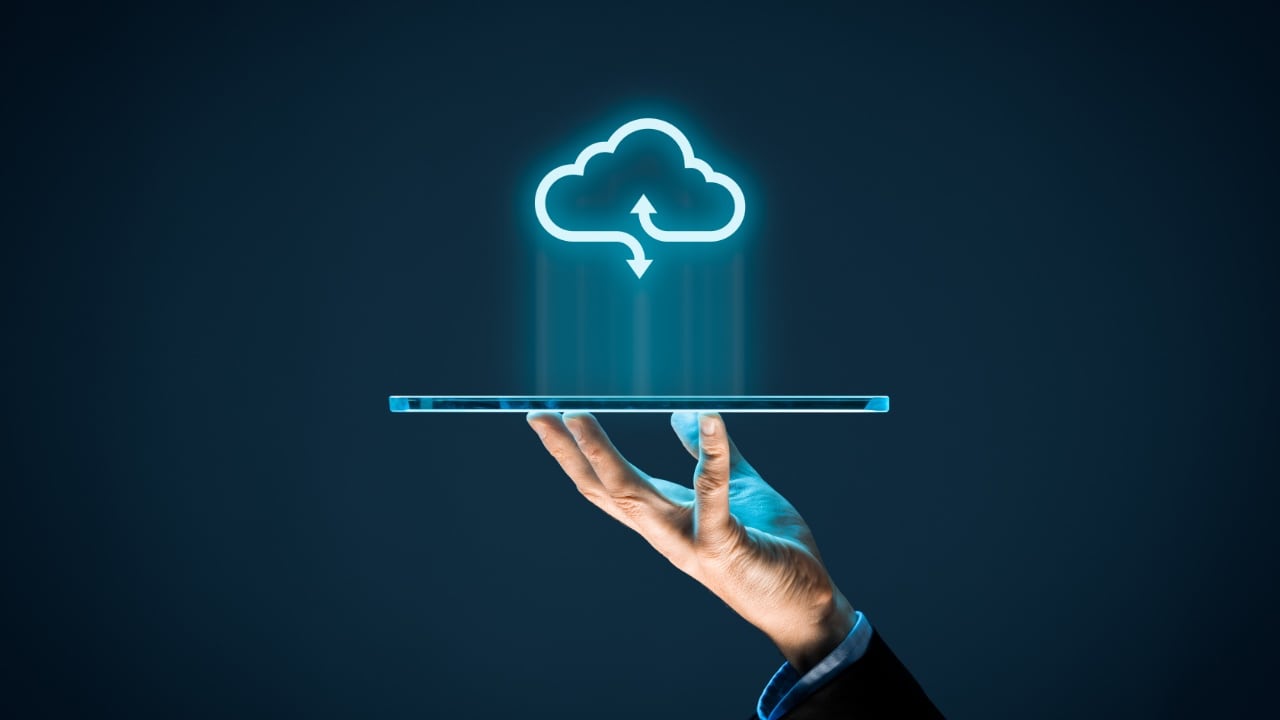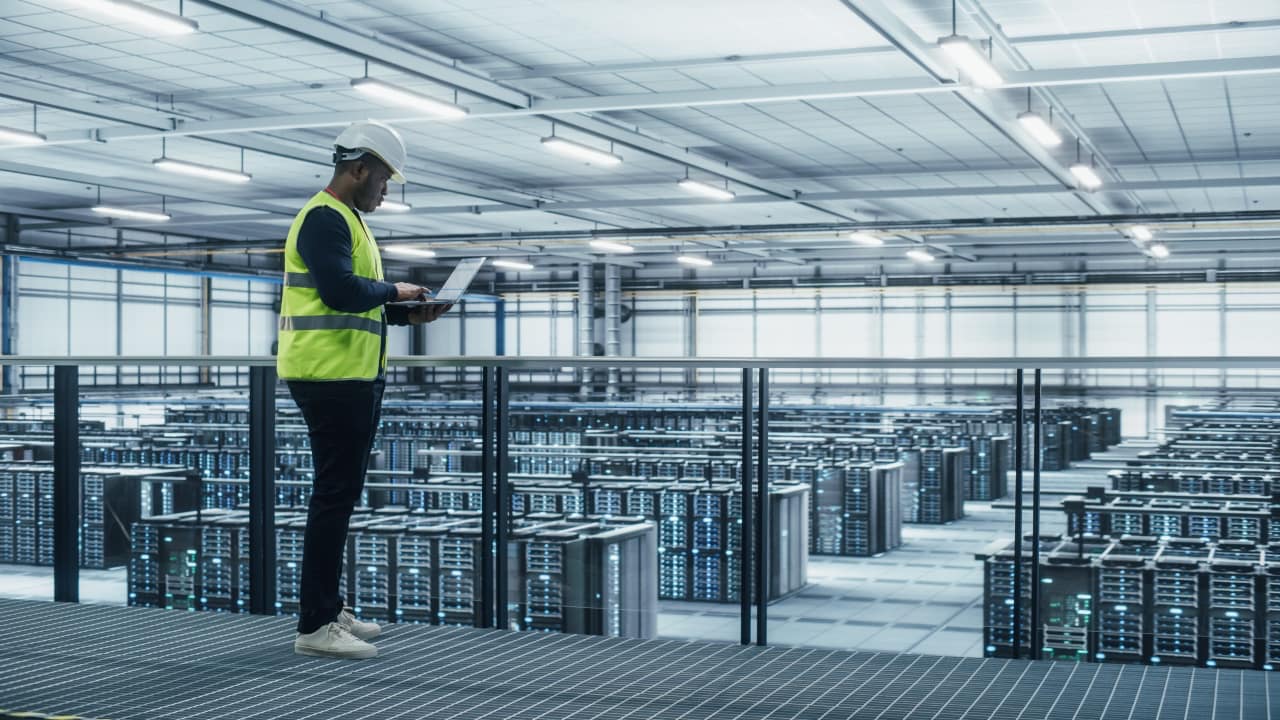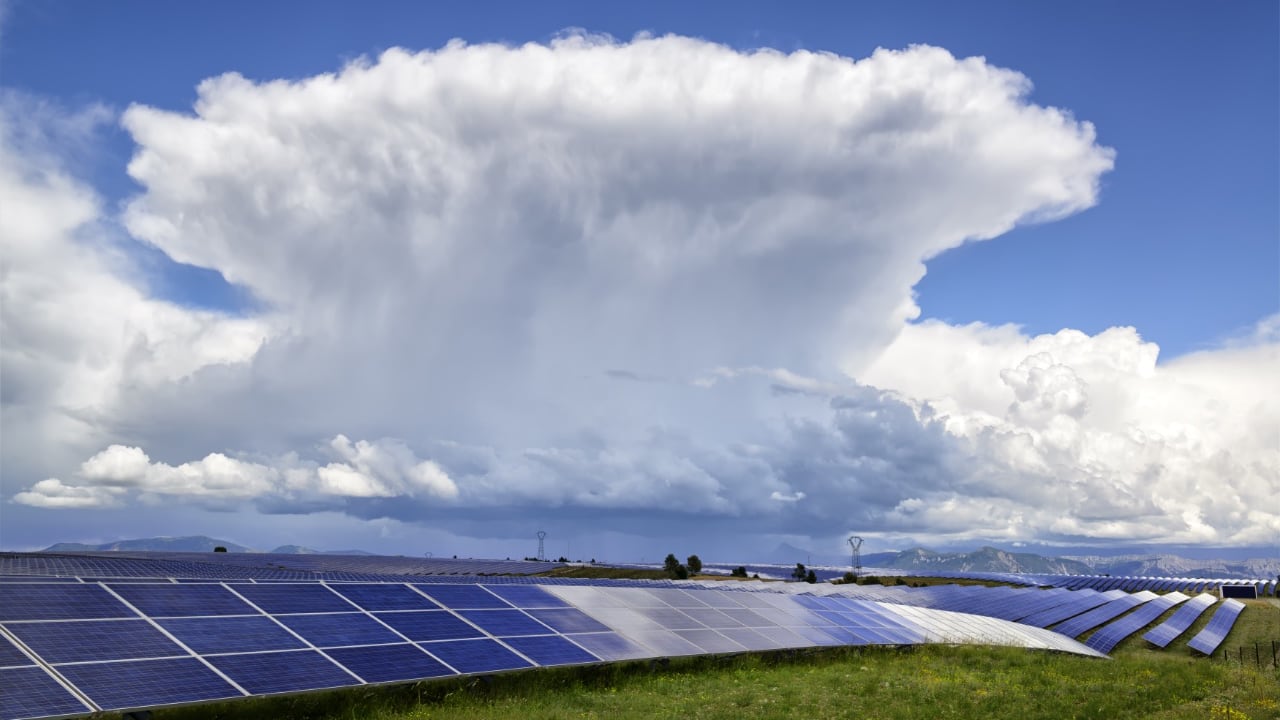
David Shapton on the cloud, past, present and future; that most nebulous of key technologies that increasingly defines how we work and more.
The cloud is named like that for a reason. "Cloud" sounds like a nebulous, ill-defined thing, and in a way, that's the whole point of it. The idea is that you should be able to use a cloud service and not have to worry about how it works or where it is, and, more than that, you'll know that it will work the same every time, wherever you are.
That's a pretty worthwhile set of features. But how does it work? What can we realistically expect from the cloud, and what are the advantages of using it over what we've done for decades, which is to have everything on or under our desks?
The first thing to know is that the cloud is absolutely, not in any sense, not even slightly, a cloud. I'm glad I was able to clear that up. Instead, it's a network of networks. So far, so internet. Where it differs from the internet is that it includes computers that do stuff and store stuff, as opposed to merely routing data from one Earth-bound end-point to another.
Decades in development
We've all been using the cloud for decades. Ever since Hotmail and Gmail landed in our primitive, early browsers, we've been taking advantage of the cloud. Gmail is a great example to show off the cloud. You don't need to install any software. It's just "there" in your browser, along with all your emails. Where are they? It doesn't matter. You'll never know. The only thing that does matter is that you can see them whenever and wherever you need to. Want to store a file? Attach it to a Gmail email and send it to yourself. Somehow, your file will sit in the cloud for all time until you decide to delete it.
The cloud's core is nothing but data centres containing thousands of computers. These are configured to be able to do cloud stuff, like serving web pages or facilitating your online banking - behind, one would hope, some pretty intense security.

But except in exceptional circumstances, which we'll come back to in a minute, you never "see" or address these computers individually. When you download a software package, view a web page or use some kind of Software as a Service (SaaS), you don't have to specify "the 47th computer from the right on the 5th row". Instead, cloud software looks after all of that for you. So, while it is true that the cloud - just like everything else to do with computers, needs, you know, computers, there are layers of software that abstract you from that level of detail.
If that sounds hard to grasp, you've been doing it as long as you've had a computer. It's what an operating system is for. When you run a program on your PC or Mac (or Linux, in all its variants), the developers who wrote your application will have known very little about your computer, except for some high-level manufacturer's information published for software writers. In fact, when Apple recently changed from using Intel chips to their own "M" series processors, they first wrote an abstraction layer that effectively made the new chips look like the old ones. Abstraction can be incredibly effective. It simplifies things and universalises them. It opens doors and makes things happen that would be near impossible otherwise.
And almost everything about the cloud is about abstraction. That's great because it makes virtually everything simpler. Most of the time, you don't need to know how it works. But sometimes you do. Just like it's perfectly possible to drive a manual gear change car without knowing how a clutch works, if you want to be an advanced driver, you really do need to learn at least the basics. We'll talk more about this in the following article, which is about "Camera to Cloud".
Superpowers assemble!
We often talk about "The cloud" (it's always "cloud "with a small "c") as if it's a magic potion you can spray on almost anything to give it superpowers. The only part of that statement that's wrong is that it's not magic - it's engineering. But it still has superpowers.
We're all used to the speed and geographical insouciance of emails. You don't have to care about whether you're sending an email next door or to the next continent: wherever it's going, it gets there instantly, without fuss or extra charges for crossing borders. And now, sending even gigantic files as easily as emails is becoming feasible. You need a decent connection, but you can assume that almost everyone will have enough internet bandwidth to handle large files in the next few years. (I know there are many often rural locations still languishing with terrible internet speeds, but at least there are options now.) Low Earth Orbit (" LEO") satellites can beam gigabit data to almost anywhere on Earth, with remarkably low latency, and with the likes of Space X, that capability is literally rocketing.
So, distance is effectively obliterated by the cloud. So, too, is isolation. Since everyone can share files, they can share their talents, too. Remote working goes hand-in-hand with collaboration. Even if you're based in Lima and your production facility is in London, you can still see the same screens as your remote colleagues and even share the same media. No, it's not the same as being sat at the same desk, but - to name just one incredible advantage - it means that a facility in a small city doesn't have to restrict itself to the local talent pool: it can pick and choose talent from all around the world. It's pretty apparent that you have more life choices if you can work remotely. Post-production can be intense and involve long hours. But at least if you don't face a two-hour commute, you can finish at midnight and be in bed at five past.
Changing patterns and behaviours
The cloud is changing the way we buy products and receive services. It also means we don't always have to buy expensive computers for processor-intensive work. Many products are now offered as a service, either as a subscription or on-demand. Subscription software isn't necessarily cloud-based, but you will likely download it from a cloud server. Subscriptions mean that your software can be updated all the time. For many, it's an essential way to keep up to date with changes in codecs, processes and - increasingly - AI.
But applications themselves are inexorably moving into the cloud. What'sApp, Grammarly and hundreds of other services we use all the time live in the cloud. While you can download apps and desktop instances, all your data is kept and most likely processed in the cloud. The app effectively becomes a front-end.
It matters less and less where your data is stored. Of course, if you need instant access to terabytes, local storage is still the best option, but NLEs and media management software can swap full-resolution files for proxy versions, often without even having to pause as you switch between one and another.
We mentioned above that you don't usually have to think in terms of a single, identifiable computer when you use the cloud. Indeed, for most purposes, the cloud's computing back-end is wholly abstracted from the users. But, occasionally, like when you need to perform data-intensive video work without having to buy computer hardware locally, you can remote into a cloud-based workstation and control it as if it were on your desk. But, even then, it is likely to have been "virtualised" so that in the event of a glitch, rather than having to repair the "cloud" computer before you can continue, a "virtual" copy can be loaded (or may be already preloaded) on another machine. This mode, while increasingly popular for some activities, is likely to be overtaken by newer, more powerful versions of the cloud, where, with almost no bandwidth limitations, you'll be able to use virtualised computers for your entire career or just for a few hours per month: it will be your choice.
The obligatory cloudy forecast pun

It's easy to miss that the cloud has become orders of magnitude more capable over the last few years, and there's no sign of it slowing down. New developments like AI will be able to call on vast cloud resources composed of the likes of Nvidia's dedicated AI processors. You'll be able to mix and match any resources you need almost instantly. For science, commerce, and the creative industries, it's an ever-growing resource at exactly the time when it's most needed.
Totally hidden from view are some new technologies that make the cloud the most powerful computing platform ever. Software designed specifically for the cloud means it's easier for even competing companies to work together. So-called Microservices and the oddly named Kubernetes container technology break down cloud software into its atomic form and allow it to be easily managed and updated. A microservice does only one thing but has documented "hooks" (called APIs) that any other microservice or software module can call on. These elemental components can be assembled into bespoke but intrinsically reliable configurations that allow the best of the best to work towards a common goal.
So the cloud has an idealistic side to it, too. If we can all learn to cooperate, the sum will be massively greater than its parts.
Tags: Technology Cloud


Comments